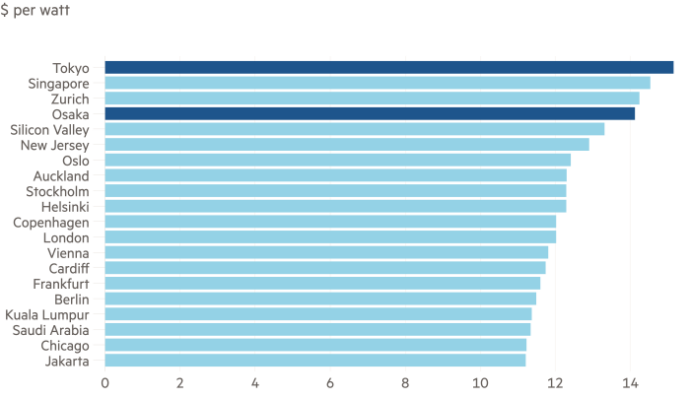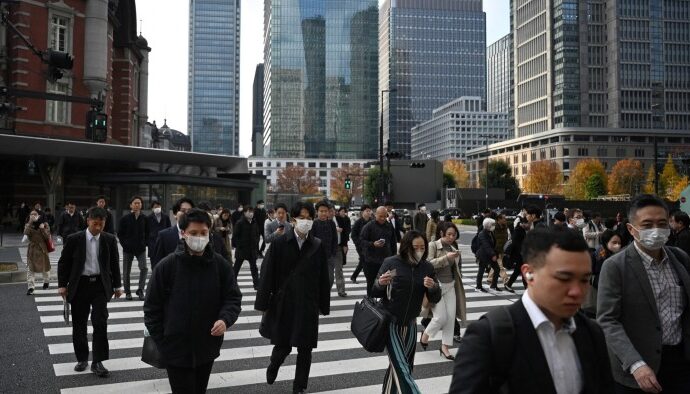Unlock the Editor’s Digest for free
Roula Khalaf, Editor of the FT, selects her favourite stories in this weekly newsletter.
Over the course of July, Japan recorded a small month-on-month fall in one of the country’s most sensitive — and too often overlooked — economic benchmarks: the curry rice price index (CRPI). The dip was a cause for temporary relief, perhaps, following a steep rise over the previous two years, but not yet a licence for gluttony.
The July shift in the CRPI catches the mass of Japanese households in a state of uncertainty, financial re-evaluation and enforced decision-making that few have experienced in more than three decades since the collapse of Japan’s late-1980s asset bubble.
The national flip from years of stagnant or falling prices to sustained price inflation is unlike anything other major developed countries have experienced since the second world war. This is not just an adjustment to rising prices, but to the concept that everything over the past 30 years was an anomaly, and unlikely to be repeated.
The CRPI data series, which is produced by private research group Teikoku Databank, tracks the aggregate costs of preparing Japan’s most cherished home-cooked meal — the rice and beef curry combination made by and for families across the country, with comfort, nutrition and budget the priority. It is obviously much narrower than government measures of inflation, but feels disproportionately representative of how the idea of inflation fixes in people’s minds.
The ingredients include domestically grown rice, potatoes, onions and carrots, as well as the cooking oil and various processed roux sauces on which the dish depends for flavour. The index assumes, given Japan’s high dependence on imported food, the use of non-domestic beef. Via that key ingredient, the whole dish is exposed to exchange rates and what has been, for the past two years, a historic run of yen weakness.
But the CRPI also factors in other yen-sensitive costs, such as electricity for steaming rice, gas for cooking the meat and water added to the pot, all of which have been subject to significant price increases.
More from this report
In July, according to Teikoku Databank, the entire cost of a single serving of curry rice was ¥438, down ¥2 from the June reading but a massive 28 per cent higher than the same month a year earlier, and more than 45 per cent higher than in July 2023.
Much of that increase is attributable to the higher cost of domestic rice, which nearly doubled in price over the course of 2024, thanks to a combination of poor harvests, government agricultural policies and strategic hoarding by some wholesalers.
The curry index merely confirms what national statistics have been showing for months: the measure of inflation that excludes fresh food stood at 3.1 per cent in July and has been hovering well above the Bank of Japan’s target of 2 per cent for 40 straight months. But the soaring cost of curry rice brings the plight of Japanese households into much sharper relief.
Food, note economists at BMI, the consultancy, accounts for 17.8 per cent of Japanese household budgets, meaning the rise in food prices will force households to focus spending on everyday essentials, with less set aside for discretionary items. Furthermore, they add, elevated inflation has weakened wages in real terms: by BMI’s calculations, which adjust for inflation, Japanese households will have a purchasing power 4.2 per cent lower than the 2019 level by the end of 2025.
Consumer spending looks very likely to be hit. But there are key areas where the effect of inflation is in the early stages of causing major change. Japan is not going to go back to deflation, says Morgan Stanley MUFG chief Japan economist Takeshi Yamaguchi, which means households need to consider investment and capital growth rather than the once perfectly rational strategy of leaving savings in the bank earning almost no interest.
Many have tentatively begun to buy Japanese equities, taking full advantage of a tax-protected savings scheme. Those that have made the leap have found a stock market where companies are under unprecedented pressure to return money to shareholders. “On a macro basis, we are seeing a big increase in dividend payments to households. It would be rational for households to shift from deposits to risk assets,” says Yamaguchi.
Inflation of the sort reflected in the curry index has also collided noisily with Japanese politics, creating precisely the sort of household-level dismay and dissatisfaction that has proved so fertile for populist parties globally. At the upper house elections in July, a stunningly large number of votes were cast for a radical populist party that has existed for only a few years. Many of its campaign speeches dwelt at length on the double challenge facing ordinary Japanese people: falling real wages and the rising cost of putting the most basic meal on the table.
No economy has spent such a long time in deflation, wages are not rising rapidly enough for households to feel they can easily weather this new environment and no investor should underestimate the scale of the psychological and practical recalibration that is currently under way.


